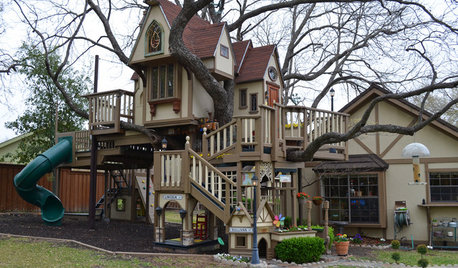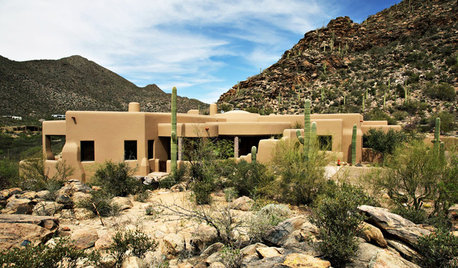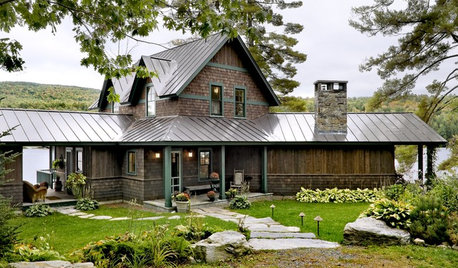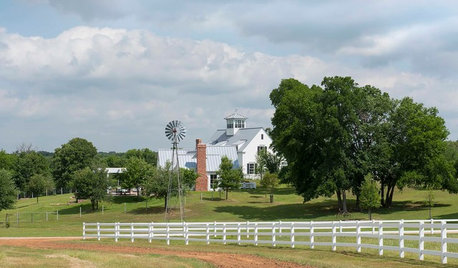A Pecan/Acorn Question For Scott & Others
Okiedawn OK Zone 7
15 years ago
Related Stories

MOST POPULARThe Most Incredible Kids' Tree House You'll Ever See?
Duck your head to enter this unforgettable Dallas wonderwork, lovingly crafted with imaginative delights
Full Story
TRADITIONAL ARCHITECTURERoots of Style: Pueblo Revival Architecture Welcomes Modern Life
Centuries-old details of adobe construction still appeal in the desert Southwest, adapted to today's tastes
Full Story
LIFEHow to Outsmart Backyard Critters
Learn to think like a raccoon, skunk or squirrel to keep your home safe and your garden intact
Full Story
GARDENING GUIDESGarden Myths to Debunk as You Dig This Fall and Rest Over Winter
Termites hate wood mulch, don’t amend soil for trees, avoid gravel in planters — and more nuggets of garden wisdom
Full Story
REMODELING GUIDESMaterials: The Advantages of a Metal Roof
Metal reigns in roofing style, maintenance and energy efficiency
Full Story
COLORBathed in Color: When to Use Gray in the Bath
Go for elegance and sophistication without going overboard on coolness, using these gray bathroom paint picks and inspirational photos
Full Story
HOUZZ TOURSHouzz Tour: Automotive Shop Becomes an Artful Warehouse Home
An artist and her husband turn a former auto transmission facility into a warm, light-filled home and studio
Full Story
MY HOUZZMy Houzz: Classic East Coast Style in Maryland
Collected vintage finds, clean furnishings and European touches are highlights of a couple's bright and airy 1923 house
Full Story
FARMHOUSESHouzz Tour: Relaxed Farmhouse Life for a Texas Family
Antiques, nostalgic collections, soothing colors and soft landing places let this family kick off their boots and get comfortable
Full Story






scottokla
Okiedawn OK Zone 7Original Author
Related Professionals
Barrington Hills Landscape Architects & Landscape Designers · Bellflower Landscape Architects & Landscape Designers · Byram Landscape Contractors · Clearlake Landscape Contractors · Davis Landscape Contractors · Hollywood Landscape Contractors · Pueblo West Landscape Contractors · Salmon Creek Landscape Contractors · Tyngsboro Landscape Contractors · Arlington Heights Decks, Patios & Outdoor Enclosures · Knoxville Decks, Patios & Outdoor Enclosures · Palmetto Decks, Patios & Outdoor Enclosures · Salt Lake City Decks, Patios & Outdoor Enclosures · Schaumburg Decks, Patios & Outdoor Enclosures · South Lyon Decks, Patios & Outdoor EnclosuresOkiedawn OK Zone 7Original Author
scottokla
Okiedawn OK Zone 7Original Author
scottokla
Okiedawn OK Zone 7Original Author
avidchamp
scottokla